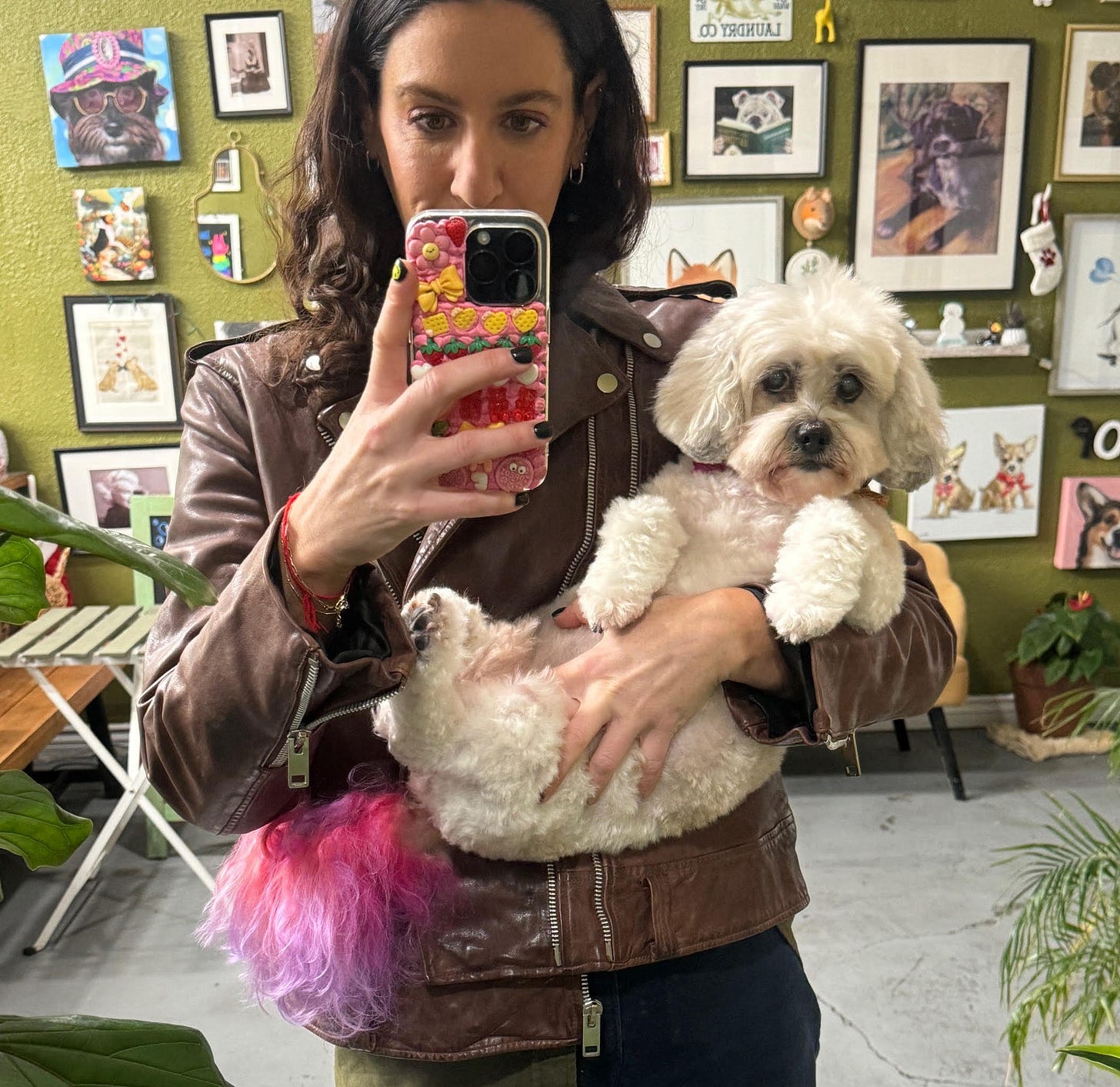Meredith Fineman is a bad ass. She is open and generous and powerful. In terms of a professional description, she’s an author, PR expert, coach, ghostwriter, second hand clothing expert, podcaster, and non-fiction book proposal writing savant.
The first time we chatted, I was somewhat intimidated but after reading her book “Brag Better: Master The Art of Self Promotion,” her energy made a lot of sense.
After all, she’s the woman who introduced the world to the whole idea of the “qualified quiet.”
………and what the hell is that?
I bet it describes a lot of you (no offense). It definitely describes me.
Here’s my stab at a definition: ‘qualified quiet’ people are uber talented, capable, and effective but unable to wear it on their sleeve. They’d rather everyone else notice it on their own.
We’ve been told that ‘showing off’ is gauche and that it will make us unlikeable. And that is the ultimate fail for a good girl, right?
I still catch myself telling my daughter to be humble because people don’t like girls who are overly confident. “It can be threatening,” I try to explain and then ask myself just what in the socially-ingrained-hell am I thinking?
This may be common knowledge but still I feel the need to point out that in 2025, an emphasis on humility-at-all-costs is how many of women and girls are socialized. What’s more interesting to me at this point is how we unlearn these tendencies.
“I’ve learned that ‘flexing’ can make people feel uncomfortable,” Meredith says. “Thing is, once they understand that sharing their work matters and leads to being rewarded for their efforts, it gets a lot less awkward.”
Meredith and I both lost our beloved dads in the recent past. This is incredibly ironic because it was my father who used to always brag for his children.
“My daughter is a bilingual therapist and violinist. My other daughter has a podcast company. My son summited Mt. Everest and now is a wealth management expert.”
BTW, those are all true, but still, my mom would “por dios!” him, cringing with embarrassment. Inevitably, he would get super defensive: “people won’t know unless I tell them!”
Meredith writes about this exact thing in a piece for Cosmo:
We’re in our own heads all day, thinking that those around us know what we do. But that’s not true—everyone is focused on their own work and their own problems. Bragging not only shows the good work you’re doing, but it also inspires others to do their work better. Because of that, showing what you’ve done makes you a better teammate, manager, and employee too.
At the end of the day, bragging is just stating the facts. In the wake of remote work and post-pandemic professionalism, bragging more efficiently and not as yuckily becomes a more intentional act. In fact, the whole “mastering the art” element of her book is inspired by the pejorative descriptor itself: BRAGGART.
Her book is a worthwhile investment for anyone but Meredith is happy to indulge us with some bullet points on better bragging at work.
Asking your boss the best way to communicate your wins to them. (If your boss loves reports and you give her your work over the phone, it’s not as effective.)
Calling a friend to ask them to celebrate your win with you.
Writing down all the things you’re up to and sharing them with the people who matter.
Contacting people outside your network to spread the word. (Like contacting a conference organizer to ask if you could be included in an upcoming virtual panel.)
In the end, whether it’s better bragging, writing a killer book proposal or sending a cold email, Meredith makes it clear: rejection is your friend.
If you don’t get rejected, it means you never tried. If you don’t try to get your work recognized or your voice heard, it means you didn’t give yourself a chance.
Which Meredith points out, is the same for objects and clothes.
In Their Vintage Era
We’re getting closer to the jewelry story here, don’t worry.
In her free time, Meredith teaches people how to monetize their wardrobes and give it fresh opportunities.
(How is THAT for a pivot?)
She runs Second Hand Society, a platform that teaches people about the value (financially, environmentally, emotionally, aesthetically) of second hand clothing. Her trademarked logo? “The future of fashion is nothing new.”
Which is why her choice of jewelry for Chainmail makes so much sense: the woman loves a good flea market.
In fact, she remembers the exact moment she found the locket. It was 2012 and she was living in Washington, DC.
…I got it in Georgetown. I don’t run and decided to run one day and I ran by a shop and looked in a case and there was a locket that had my exact initials… (MCF) and the odds of that are so low so I went back and bought it, obviously. I think that I usually seek out unique objects that aren’t in their first life. It’s a crazy happenstance thing.
“Not in their first life.” So many people look at used objects as “baggage heavy, bad energy” but Meredith thinks just the opposite; “value” is completely relative.
The fashion district, a pawn shop, a museum store: all have great jewelry waiting for new homes. And so what if it isn’t “real?”
“Just pop on some clear nail polish and you should be good to go,” says the Resident Resale Queen.
But when it comes to certain pieces, maybe skip the possible baggage.
“Engagement rings may not have the best juju.”
…but if they help you brag better?
More on Meredith and her work HERE. Check out her free book proposal on February 27th at 4pm PT/7pm EST. Register HERE.
Take care of your hearts.






